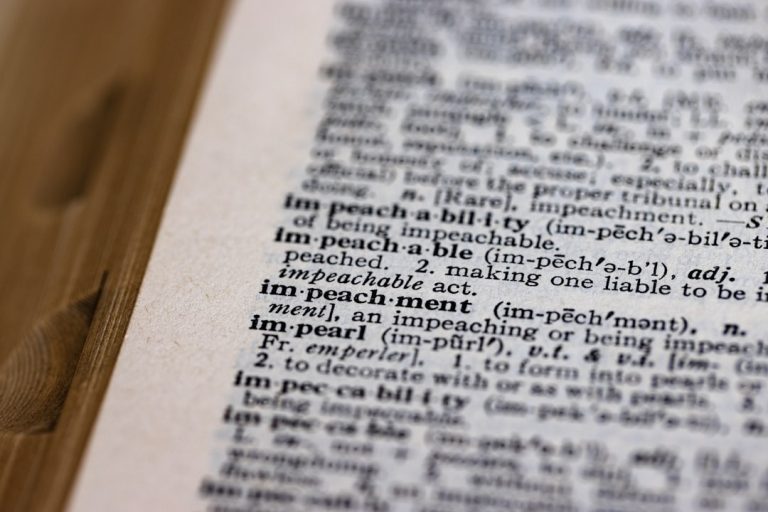
Hyphens are a unique and often misunderstood aspect of American English punctuation. They serve as a bridge between words, linking them together to create compound terms that convey specific meanings. The use of hyphens can clarify meaning, prevent ambiguity, and enhance readability.
For instance, consider the difference between “small business owner” and “small-business owner.” The latter indicates that the owner is part of a small business, while the former could imply a business that is small in size but not necessarily a small business entity. This subtlety underscores the importance of hyphens in effective communication. In American English, the rules governing hyphen usage can be intricate and sometimes inconsistent.
While some guidelines are widely accepted, others may vary based on style guides or personal preference. The evolution of language also plays a role in how hyphens are used; as certain compound words become more common, they may lose their hyphenation over time. Understanding the nuances of hyphen usage is essential for anyone looking to write clearly and effectively, whether in academic, professional, or casual contexts.
Key Takeaways
- Hyphens are used in American English to join words together and form compound words.
- Basic rules for using hyphens include using them to connect two or more words that act as a single idea before a noun, and to avoid ambiguity or awkward combinations of letters.
- Compound words are often hyphenated when they are used as adjectives before a noun, but not when they come after the noun.
- Hyphens are used in prefixes and suffixes to avoid confusion or to join a prefix to a proper noun or adjective.
- Hyphens are used in numbers and dates to connect the words in a range, to spell out fractions, and to connect compound numbers.
Basic Rules for Using Hyphens
The fundamental rules for using hyphens revolve around their role in connecting words and clarifying meaning. One of the primary uses of hyphens is to form compound adjectives that precede nouns. For example, in the phrase “well-known author,” the hyphen connects “well” and “known” to indicate that they work together to describe the noun “author.” Without the hyphen, the phrase could be misinterpreted, leading to confusion about the author’s level of fame or recognition.
Another essential rule is that hyphens are often used to avoid ambiguity in phrases where two or more words could be misread. For instance, “re-cover” (to cover again) is distinct from “recover” (to regain something). In this case, the hyphen clarifies the intended meaning and prevents misinterpretation.
Additionally, when using hyphens with compound numbers, such as twenty-one or thirty-five, it is crucial to maintain consistency in writing. These basic rules form the foundation for more complex applications of hyphens in American English.
Compound Words and Hyphenation

Compound words are formed when two or more words are combined to create a new meaning. In American English, these compounds can be written as closed compounds (without a hyphen), open compounds (with a space), or hyphenated compounds (with a hyphen). The choice of format often depends on common usage and established conventions.
For example, “notebook” is a closed compound, while “ice cream” is an open compound. On the other hand, “mother-in-law” is a classic example of a hyphenated compound. The decision to use a hyphen in compound words can also depend on whether the compound functions as an adjective or a noun.
When used as an adjective before a noun, hyphenation is typically required. For instance, “high-speed train” uses a hyphen to clarify that the train operates at high speed. However, when the same compound follows the noun, as in “the train is high speed,” the hyphen is usually omitted.
This distinction highlights the importance of context in determining whether to use a hyphen in compound words.
Hyphens in Prefixes and Suffixes
| Prefix/Suffix | Example | Usage |
|---|---|---|
| Non- | Non-stick | Indicates negation or absence |
| Re- | Rebuild | Indicates repetition or restoration |
| -less | Careless | Indicates absence or lack of something |
| -ful | Beautiful | Indicates full of something |
Hyphens also play a significant role when it comes to prefixes and suffixes in American English. When adding prefixes such as “ex-,” “self-,” or “co-,” a hyphen is often necessary to avoid confusion or awkward pronunciation. For example, “co-worker” clearly indicates that two individuals work together, while “coworker” may lead to mispronunciation or misunderstanding.
Similarly, “self-esteem” uses a hyphen to connect the prefix “self-” with the root word “esteem,” ensuring clarity in meaning. However, not all prefixes require hyphenation. The prefix “un-” typically does not need a hyphen when attached to adjectives or verbs, as in “unhappy” or “undo.” Yet exceptions exist; for instance, “un-American” uses a hyphen to prevent ambiguity and clarify that it refers specifically to something that is not American.
Understanding when to use hyphens with prefixes and suffixes is crucial for maintaining clarity and precision in writing.
Hyphens in Numbers and Dates
Hyphens are commonly used in writing out numbers and dates, particularly when they are part of compound adjectives or when they appear in written form. For example, when writing out numbers between twenty-one and ninety-nine, a hyphen is necessary: “twenty-five” and “eighty-seven.” This rule helps maintain consistency and clarity when expressing numerical values in text. In addition to numbers, hyphens are also employed in dates when they are used adjectivally.
For instance, one might write “the 2020-2021 school year” to indicate a specific time frame. In this case, the hyphen connects the two years to show that they are part of a continuous period. However, when writing out dates in full (e.g., January 1, 2023), no hyphenation is needed.
The distinction between using hyphens for numerical expressions versus full dates illustrates how context influences punctuation choices.
Hyphens in Adjectives and Adverbs

Hyphens are particularly important when forming compound adjectives and adverbs that modify nouns or verbs. When two or more words come together to describe a noun, they often require a hyphen for clarity. For example, “fast-paced environment” uses a hyphen to indicate that the environment has a pace that is fast.
Without the hyphen, readers might misinterpret the phrase as describing an environment that is simply fast. In contrast, adverbs ending in “-ly” typically do not require hyphenation when they modify adjectives or other adverbs. For instance, one would write “beautifully crafted vase” without a hyphen because “beautifully” modifies “crafted.” However, if an adverb does not end in “-ly,” such as “well,” it may require a hyphen: “well-deserved recognition.” This distinction highlights the nuanced rules surrounding hyphenation in adjectives and adverbs.
Hyphens in Compounds Involving Proper Nouns and Titles
When dealing with proper nouns and titles, hyphens can serve to clarify relationships between words and enhance readability. For example, consider the title “The New York-based company.” Here, the hyphen connects “New York” with “based,” indicating that the company operates out of New York City. Without the hyphen, readers might struggle to understand the relationship between these terms.
Hyphens are also used in names that include multiple components or titles. For instance, “John Smith-Jones” indicates that an individual has both surnames connected by a hyphen. This usage helps prevent confusion regarding identity and lineage.
Additionally, titles such as “Vice-President” may be hyphenated when used as part of an official title but may not require a hyphen when used descriptively (e.g., “the vice president”). Understanding how to apply hyphens with proper nouns and titles is essential for maintaining clarity and accuracy in writing.
Common Mistakes and Exceptions with Hyphens
Despite their importance, many writers encounter common pitfalls when using hyphens. One frequent mistake involves over-hyphenation; writers may add unnecessary hyphens where they do not belong. For example, phrases like “a very unique experience” do not require a hyphen because “very” does not modify the adjective uniquely enough to warrant one.
Similarly, some writers mistakenly use hyphens with adverbs ending in “-ly,” which should remain unhyphenated. Another area where confusion arises is with compound adjectives that have become widely accepted as single words over time. Terms like “email” and “website” were once commonly written with hyphens but have since evolved into closed compounds as their usage has become more standardized.
Writers must stay informed about these changes to ensure their writing remains current and adheres to contemporary conventions. In conclusion, mastering the use of hyphens in American English requires an understanding of various rules and exceptions that govern their application across different contexts. By recognizing how hyphens function within compound words, prefixes and suffixes, numbers and dates, adjectives and adverbs, proper nouns and titles, writers can enhance clarity and precision in their communication while avoiding common mistakes associated with this nuanced punctuation mark.
If you are looking to improve your English reading skills, you may find the article “How to Improve English Reading: An English Learner’s Guide eBook” helpful.
Additionally, if you are interested in enhancing your English conversation skills, you may want to check out the article “Improving English Conversation.” This article provides practical advice for becoming a more confident and fluent English speaker. Lastly, if you are an ESL student looking for online language learning resources, the article “Online Language Learning for ESL Students” may be of interest to you. This article explores various online platforms and tools that can help you improve your English language skills. Source
FAQs
What is a hyphen in American English punctuation?
A hyphen is a punctuation mark used to join words or parts of words together. It is often used to create compound words, such as “well-being” or “mother-in-law.”
When should hyphens be used in American English?
Hyphens should be used to join two or more words that act as a single adjective before a noun, such as “high-quality products” or “well-known author.” They are also used to join prefixes to words, such as “pre-approval” or “anti-inflammatory.”
Are there any specific rules for using hyphens in American English?
Yes, there are specific rules for using hyphens in American English. For example, compound numbers between twenty-one and ninety-nine are hyphenated, such as “thirty-five” or “sixty-eight.” Additionally, hyphens are used to avoid confusion or ambiguity, such as in “re-sign” (to sign again) versus “resign” (to quit).
What are some common mistakes to avoid when using hyphens in American English?
Common mistakes to avoid when using hyphens in American English include overusing them, using them with certain prefixes (such as “co” or “non”), and failing to hyphenate compound modifiers before a noun.
Can hyphens change the meaning of a sentence in American English?
Yes, hyphens can change the meaning of a sentence in American English. For example, “small business owner” and “small-business owner” have different meanings, with the latter indicating that the person owns a small business rather than being small themselves.






